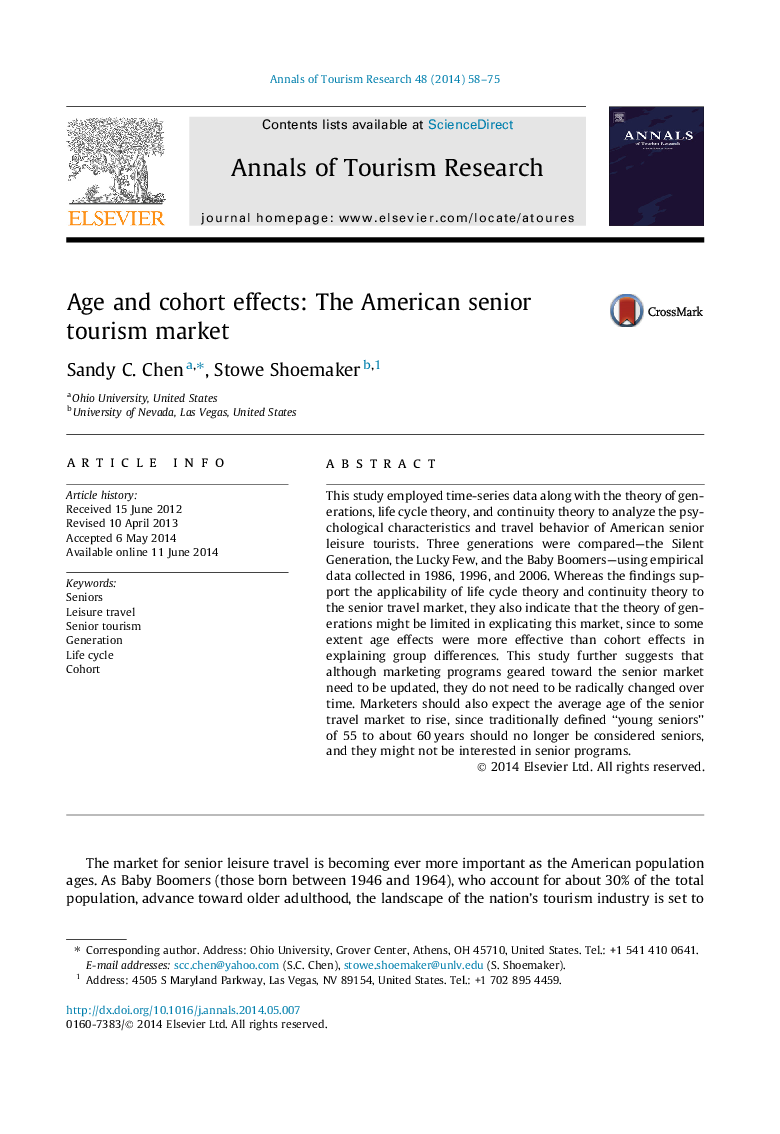| کد مقاله | کد نشریه | سال انتشار | مقاله انگلیسی | نسخه تمام متن |
|---|---|---|---|---|
| 1007092 | 1482248 | 2014 | 18 صفحه PDF | دانلود رایگان |
• The senior tourism market remained relatively stable from 1996 to 2006.
• The continuity theory is useful for explaining the behaviors of senior tourists.
• Generation theory might be limited in explaining senior travel behavior.
• Life cycle theory is useful in explaining senior travel behavior as well.
• It would be mistaken to treat people ages 55 to 60 today as senior citizens.
This study employed time-series data along with the theory of generations, life cycle theory, and continuity theory to analyze the psychological characteristics and travel behavior of American senior leisure tourists. Three generations were compared—the Silent Generation, the Lucky Few, and the Baby Boomers—using empirical data collected in 1986, 1996, and 2006. Whereas the findings support the applicability of life cycle theory and continuity theory to the senior travel market, they also indicate that the theory of generations might be limited in explicating this market, since to some extent age effects were more effective than cohort effects in explaining group differences. This study further suggests that although marketing programs geared toward the senior market need to be updated, they do not need to be radically changed over time. Marketers should also expect the average age of the senior travel market to rise, since traditionally defined “young seniors” of 55 to about 60 years should no longer be considered seniors, and they might not be interested in senior programs.
Journal: Annals of Tourism Research - Volume 48, September 2014, Pages 58–75
